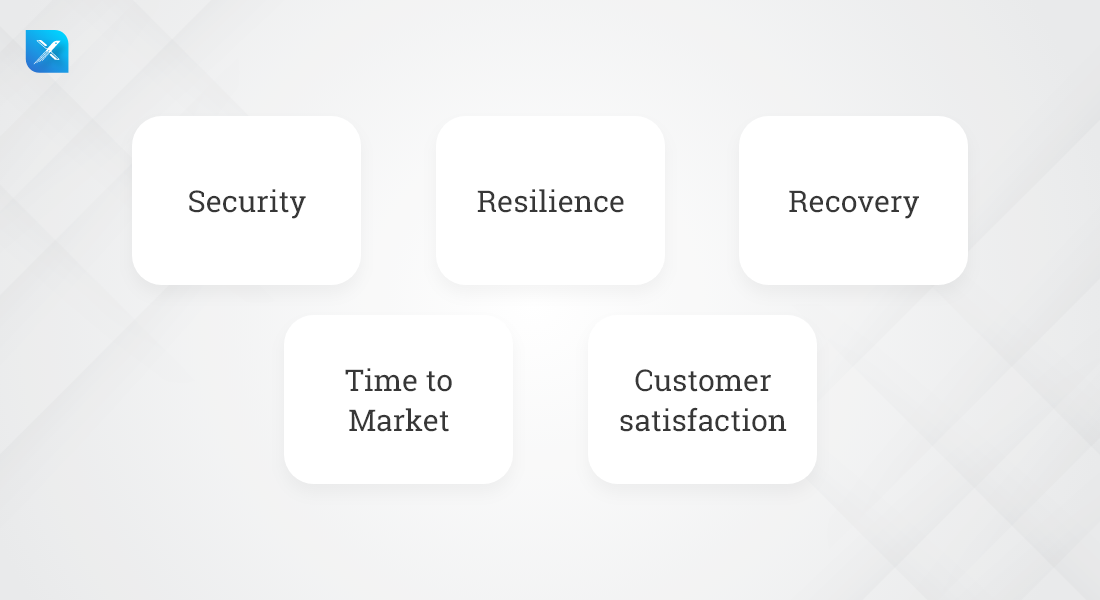AI Development for Enterprises: Cost,...
July 3, 2025

DevOps, a method that combines software development and IT operations, streamlines and automates crucial business procedures to allow continuous updates and delivery, shorten development lifecycles, and enhance product quality. Let’s examine how DevOps might be applied to app modernization efforts in light of this.
In this post, we’ll discuss the modernization of legacy applications and the ways that DevOps enables businesses to set up their modernization procedures.
To better understand the concept, first, let’s understand what exactly is Legacy Modernization. It symbolizes a journey and fundamental adjustments to the delivery, architecture, and services of IT. It all comes down to re-engineering, reconstructing, and enabling organizations to operate in new ways using data-driven, computerized, and smart processes, to put it simply.
Modernization is the demand of the current generation. You won’t be able to compete in the market without focusing on modernization. There are several reasons for this, one of which is that it improves the organization’s ability to deliver sustainable performance.
Legacy apps must adapt swiftly to the current digital world to explore better outcomes and opportunities with fewer costs and barriers. To successfully modernise IT, businesses must manage and update their business systems from beginning to finish. Modernizing legacy systems using DevOps.
Software development and IT operations are combined in the DevOps set of practices. It seeks to speed up the system development process and offer continuous software delivery of the highest caliber. Agile software development and DevOps go hand in hand; many DevOps elements were inspired by Agile.
Let’s have a look at some of the major benefits of DevOps which enhances the organization’s operations.

As risks to security aggravate, expenditures also increase. Security may be tested and coded into applications using DevOps at every stage of their development.
Failure points are reduced by coordinating the development, deployment, scalability, privacy, monitoring, and administration with a cooperative, communicative culture. Potential problems can be forewarned. It is possible to automate the release procedure to allow for ongoing development.
A sophisticated, high-performing DevOps approach enables frequent updates (and hence faster delivery), which speeds up the time to market for software.
Despite the delivery team’s best efforts, codes do occasionally break. Communication is the foundation of DevOps, and via collaboration, teams can quickly identify and address causes of failure, accelerating the iterative release process.
Top-notch DevOps engineers are always learning new things. With the use of CI/CD and Agile development approaches, this mindset enables teams to react rapidly, modify and correct software, and deploy problem patches to keep customers satisfied. In addition to problem-solving, responding to customer feedback involves developing software that increases customer happiness.
Code is deployed more frequently, lead times are significantly shorter, and downtime is recovered more quickly by DevOps teams. Successful DevOps ultimately increases a system’s chances of being positively accepted by an organization and reaping the benefits that follow.
The following are some crucial modernization process major elements:

One of the main objectives of modernization is the transition from manual to automated processes. Time and money are saved through automated tools and technologies. Additionally, it supports improved performance and greater efficiency.
One of the key DevOps principles is continuous integration. Code, people, and processes are all tightly integrated throughout the application lifecycle to enable rapid software development and deployment.
Automating testing, explicitly doing so much earlier in the software development process, is a “shift-left” DevOps practice. As a result, defects are found and repaired more quickly, allowing developers to concentrate on the quality of the build rather than waiting for mistakes to happen. Additionally, they can avoid long delays by providing feedback and implementing iterative adjustments as soon as possible.
DevOps is more than simply a technology or a process. It symbolizes significant cultural shifts in terms of teams, competencies, and mindsets. It involves modifications to both tools and mindsets. Teams must now create compact, autonomous, and quickly deployable units as opposed to working on a system as a whole.
The use of standard processes throughout the organization allows for easy system onboarding across teams, effective governance, and improved process and responsibility clarity.
DevOps makes sure that the architecture for software development can survive any circumstance, whether a heavy load of simultaneous connections or uploading a little update to the system. With DevOps, a company may more effectively utilize its talents and resources to produce high-quality software more quickly and at a reduced cost.
A quicker feedback cycle is made possible by team communication and collaboration. In the end, it boosts deployment speed and dependability without posing many dangers.
Any IT modernization project benefits most from the combination of cloud, microservices, and DevOps. The popularity of this combo is rising. Organizations can create a continual modernization strategy to achieve a competitive edge by investing in the right technologies and capabilities.
As was already noted, depending on how effectively DevOps has been implemented, the team’s mentality and culture can either be a hindrance or a benefit in adopting the better system. For modernized technologies to effectively integrate and maximize commercial benefits, cultural change must be entirely accepted. Helping these teams completely comprehend how much time, effort, and resources they would save with the new system, as well as making sure everyone is adequately taught and supported in learning how to use it, will significantly enhance employee satisfaction and the effectiveness of the upgraded system.
Every organization should implement DevOps to achieve faster, more efficient, and more effective responses, which is a key component of IT modernization. You can hire a DevOps team from a reputed software development company.